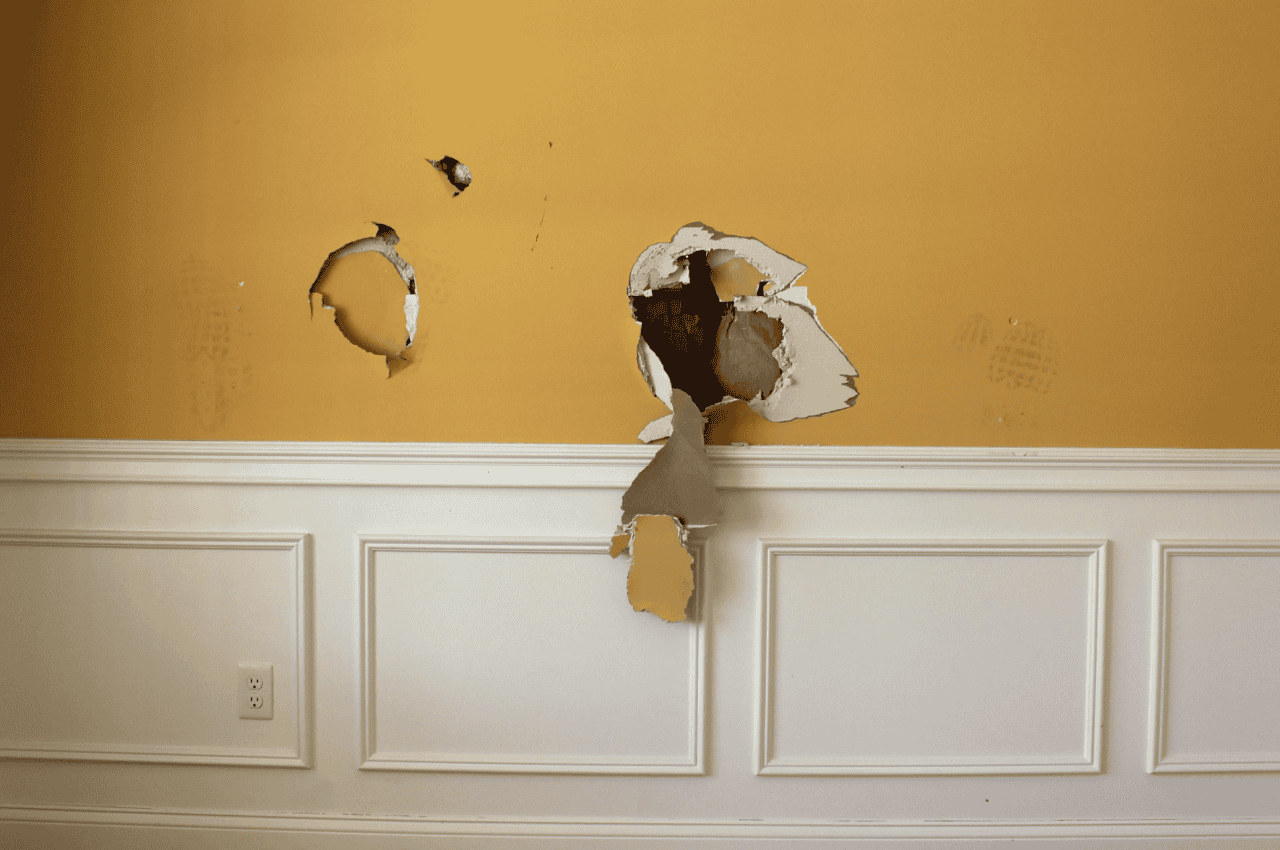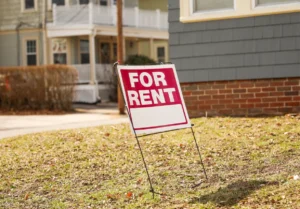Typical grounds for damage-related eviction include willful property destruction, or maintenance issues the tenant caused but refused to properly fix.

Can a Landlord Evict a Tenant for Damaging Property?
Yes, a landlord can legally evict a tenant for damaging rental property either intentionally or due to negligence and failing to repair the damages. Typical grounds for damage-related eviction include willful property destruction, or maintenance issues the tenant caused but refused to properly fix.
Landlords have the right to protect their investment and maintain the value of their property. Damages that affect the safety or functionality of the unit, or that violate the terms of the lease agreement, may lead to eviction.
However, landlords must follow proper legal procedures, such as providing written notice of the damage, giving the tenant an opportunity to address the issue, and following local eviction laws.
It is important for both landlords and tenants to understand their rights and responsibilities regarding property damage and eviction.
This article will provide an overview of the process and legal considerations for landlords who need to evict a tenant for damaging their property.
Understanding The Potential For Eviction
As a landlord, dealing with property damage caused by tenants can be a frustrating and complex situation.
When your rental property is damaged, you may be left wondering if you have grounds for eviction.
Understanding the potential for eviction due to property damage is crucial for protecting your investment and ensuring the well-being of your tenants.
Landlord’s Right To Evict For Property Damage
When tenants cause significant damage to a rental property, landlords have the right to pursue eviction.
This is because property damage not only poses financial risks but can also disrupt the living conditions of other tenants and compromise the integrity of the property itself.
However, it is important to establish a clear understanding of when eviction is justified and how the legal process should be followed.
Need Legal Help?
Chat with a real estate lawyer near you. It’s only $5 for a 1-week trial. Ask unlimited questions.
Legal Process And Requirements For Eviction
Evicting a tenant for property damage requires adherence to specific legal processes and requirements.
Each state may have its own set of laws and regulations governing evictions. So it is crucial to familiarize yourself with the specific guidelines applicable to your location. Here are some common steps involved in the eviction process:
Review the Lease Agreement
Before initiating the eviction process, carefully review the lease agreement to ensure that it includes provisions related to property damage and the tenant’s responsibilities.
Documenting the Damage
Thoroughly document the property damage by taking photographs or videos. This evidence will be vital in supporting your case during the eviction process.
Written Notice
Provide the tenant with a written notice, clearly stating the nature of the damage and the required actions to address it. Specify a reasonable period for the tenant to rectify the situation.
Filing an Eviction Lawsuit
If the tenant fails to address the property damage within the specified period, file an eviction lawsuit with the appropriate court. Consult with a legal professional to ensure all necessary paperwork is correctly completed.
Attending the Court Hearing
Attend the court hearing and present your evidence of property damage. The judge will evaluate the case and make a decision regarding eviction.
Executing the Eviction Order
If the court grants the eviction, follow the prescribed procedures for executing the eviction order, which typically involves involving law enforcement officials.
Ensuring a thorough understanding of your rights as a landlord and the legal processes involved in evicting a tenant for property damage is essential.
By following the appropriate procedures, documenting the damage, and seeking legal advice if needed, you can effectively address property damage and protect your rental property investment.
Assessing The Extent Of Damage
A landlord has the right to evict a tenant for damaging rental property. However, the extent of the damage and the proper legal process should be assessed before taking any action.
Determining The Severity And Impact Of Property Damage
Assessing the extent of damage caused by a tenant is a crucial step for landlords who are considering eviction.
Landlords need to determine the severity and impact of the property damage in order to make an informed decision and take appropriate action.
When it comes to determining the severity of damage, landlords should inspect the property thoroughly, paying close attention to any visible signs of destruction.
This may include broken windows, damaged furniture, holes in walls, or any other noticeable harm. It is essential to evaluate the extent of the destruction and determine whether it is repairable or beyond repair.
Additionally, landlords need to assess the impact of the damage on the property’s value and functionality. Some damages may affect the livability of the space, while others may decrease the property’s market value.
Taking these factors into consideration helps landlords understand the full extent of the harm caused by the tenant and make a fair judgment about the eviction process.
Documentation And Evidence Collection
Collecting documentation and evidence is vital when dealing with tenant-caused property damage.
Proper documentation serves as concrete proof in legal disputes and strengthens the landlord’s case if eviction becomes necessary.
Landlords should document the damage by taking photographs or videos. This visual evidence helps in presenting a clear picture of the destruction caused.
Along with visual documentation, it is crucial to maintain written records, detailing the date when the damage was discovered and a thorough description of the harm.
Moreover, landlords should consider gathering any additional evidence that may help support their case, such as receipts and invoices for repairs or estimates from professionals.
These documents establish the costs incurred due to the tenant’s misconduct and further strengthen the landlord’s claim.
It is worth noting that detailed documentation and evidence collection should be done as soon as the damage is discovered. Timeliness ensures accuracy and avoids any potential arguments regarding the legitimacy of the damage.
Legal Recourse For Landlords
When a tenant damages property, it is a serious concern for landlords. Not only does it affect the overall value of the property, but it also disrupts future tenancies.
Landlords need to explore legal recourse options to protect their investment and recover any financial losses incurred due to tenant damage.
Understanding the legal options available can help landlords take appropriate action swiftly and effectively.
Recovering Financial Losses Through Security Deposit
One of the first steps that a landlord can take is to utilize the security deposit. The security deposit is a sum of money held by the landlord throughout the tenant’s occupancy and can be used to cover damages or unpaid rent.
To recover financial losses through the security deposit, a landlord must:
- Document the existing damages in a thorough move-in inspection report.
- Conduct a move-out inspection to compare the condition of the property against the initial report.
- Deduct the cost of repairs or damages from the security deposit.
- Provide the tenant with an itemized breakdown of deductions and return any remaining amount.
It is important for landlords to remember that deductions from a security deposit must be reasonable and necessary. This means that only actual damages caused by the tenant can be withheld from the deposit.
Taking Legal Action To Claim Damages Beyond The Security Deposit
While a security deposit might cover minor damages, it may not be sufficient to address significant destruction or financial losses exceeding the deposit amount.
To explore legal action and claim damages beyond the security deposit, landlords need to consider the following:
| Step | Description |
| 1 | Assessing the extent of damages and calculating the total financial loss incurred. |
| 2 | Sending a demand letter to the tenant, outlining the damages and the amount owed. |
| 3 | Initiating a lawsuit if the tenant fails to respond or refuses to pay within a reasonable timeframe. |
| 4 | Gathering evidence, such as photographs, repair invoices, and witness statements, to support the claim. |
| 5 | Presenting the case in small claims court or hiring an attorney for more complex legal proceedings. |
Tenant Responsibilities And Liability
As a tenant, it is important to understand your responsibilities when it comes to maintaining the property you are renting.
Not only can neglecting these responsibilities lead to difficulties with your landlord, but it can also potentially result in eviction if property damage occurs.
Understanding Tenant Responsibilities To Maintain The Property
When you sign a lease agreement, you enter into a legal contract that outlines your responsibilities as a tenant.
These responsibilities typically include keeping the rental unit clean and in good condition, promptly reporting any necessary repairs to the landlord, and abiding by the terms of the lease agreement.
It’s important to read and familiarize yourself with these responsibilities to ensure you are meeting your obligations.
Here are some specific examples of tenant responsibilities:
- Keeping the premises clean and free from any health or safety hazards, such as removing trash regularly and ensuring proper waste disposal.
- Reporting any damage or necessary repairs to the landlord in a timely manner. This includes issues like plumbing leaks, faulty electrical systems, or structural damage.
- Using appliances and fixtures properly and responsibly to avoid unnecessary wear and tear or damage.
- Respecting the property and the neighbors by adhering to any noise regulations and not causing disturbances.
- Maintaining the exterior of the property, such as keeping the yard tidy and shoveling snow.
- Adhering to any additional responsibilities outlined in the lease agreement, such as obtaining renter’s insurance or restrictions on pets.
Potential Liability For Intentional Or Negligent Damage
While accidents can happen, it’s important to understand the potential consequences if you cause intentional or negligent damage to the rental property. In such cases, you may be held liable for the repairs and could face eviction.
If you intentionally damage the property, such as by purposefully punching holes in walls or destroying fixtures, your landlord can take legal action to evict you.
In addition to eviction, you may be required to pay for the repairs and potentially face legal consequences.
Negligent damage, on the other hand, refers to damage that occurs due to your failure to exercise reasonable care. For example, if you leave a faucet running and it causes water damage to the floors or walls, you may be liable for the repairs.
Similarly, if you fail to properly maintain appliances and they break down as a result, you may be responsible for any replacement costs.
It’s essential to notify your landlord promptly if any damage occurs, regardless of whether it was intentional or accidental.
By doing so, you demonstrate your willingness to take responsibility for the damage and mitigate any potential negative consequences.
Mitigating Property Damage And Promoting Tenant Cooperation
As a landlord, it is crucial to take proactive steps to mitigate property damage and foster a cooperative relationship with your tenants.
By implementing strategies to prevent property damage and promoting open communication, you can not only minimize potential conflicts but also create a harmonious living environment.
Here are some effective techniques to consider:
Strategies To Prevent Property Damage
Prevention is always better than cure, and this holds true when it comes to rental properties. By incorporating the following strategies, you can significantly reduce the likelihood of property damage:
- Maintain regular property inspections to identify any potential hazards or maintenance issues.
- Provide clear guidelines and expectations regarding property care and maintenance in the lease agreement.
- Install security measures such as surveillance cameras or alarm systems to deter unauthorized entry and vandalism.
- Ensure proper ventilation in the property to prevent moisture-related issues like mold and mildew.
- Regularly service and maintain essential systems within the property, such as plumbing and electrical wiring.
- Consider using durable and low-maintenance materials for the property’s interior and exterior.
- Implement a thorough screening process to select responsible tenants who prioritize property care.
Promoting Open Communication And Resolving Issues Harmoniously
A strong and open line of communication can go a long way in resolving issues before they escalate and cause extensive property damage.
Here are some ways to promote effective communication and handle conflicts harmoniously:
- Establish regular channels of communication with your tenants, such as email, phone, or in-person meetings.
- Respond promptly to tenant inquiries or concerns and address any maintenance requests promptly.
- Encourage tenants to report any potential issues, such as leaks or damages, as soon as they notice them.
- Be proactive in resolving conflicts by listening to tenant grievances and finding mutually beneficial solutions.
- Ensure clear and transparent communication regarding property rules, regulations, and responsibilities.
- Consider implementing an online tenant portal where tenants can easily report issues and track resolutions.
- Maintain a respectful and professional attitude when dealing with tenant conflicts to foster a cooperative atmosphere.
Frequently Asked Questions On Can A Landlord Evict A Tenant For Damaging Property
What Happens If A Rental Property Is Completely Destroyed?
If a rental property is completely destroyed, the landlord’s insurance would typically cover the cost of repair or rebuilding. Tenants would need to find alternative accommodation, and their personal belongings might be covered by renter’s insurance. Communication between the landlord and tenant is crucial.
Can A Landlord Evict A Tenant For Damaging Property?
Yes, landlords have the right to evict tenants for damaging their property as it violates the terms of the lease agreement.
What Evidence Is Needed To Evict A Tenant For Damaging Property?
Landlords should collect evidence such as photographs, videos, and written statements from witnesses to prove tenant damage.
Can A Landlord Deduct Repair Costs From A Security Deposit For Tenant Damage?
Yes, landlords can deduct repair costs from a tenant’s security deposit to cover damages caused during the lease period.
Final Words
Landlords have the right to evict tenants for damaging property, but they must follow legal procedures. They should provide notice and give the tenant an opportunity to rectify the situation.
Documentation and evidence are crucial in these cases. It is important for both landlords and tenants to understand their rights and obligations to maintain a fair and harmonious rental relationship.
Source: Rental Awareness













 Accessibility
Accessibility